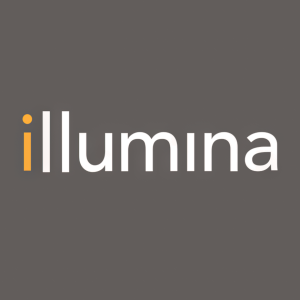Illumina launches latest chemistry across most popular mid-throughput sequencers, enabling higher quality and greater speed for customers at lower cost
Illumina has integrated its new XLEAP-SBS™ chemistry into all reagents for its NextSeq™ 1000 and NextSeq 2000 NGS instruments. This update promises faster run times, enhanced quality, and higher output at a lower cost per kit.
In March, Illumina launched the P4 flow cell for NextSeq 2000, delivering up to 540 Gb of output. Now, the company confirms availability of XLEAP-SBS P1, P2, and P3 flow cells, further advancing sequencing capabilities.
Early-access users report notable improvements in read quality, stability, and turnaround times, with a 20% reduction in sequencing time. These enhancements facilitate larger NGS projects and broader adoption of multiomic approaches without increasing budgets.
- Integration of XLEAP-SBS chemistry into NextSeq 1000/2000 reagents.
- Faster run times and enhanced sequencing quality.
- Higher output per sequencing kit.
- Lower cost per kit for customers.
- P4 flow cell offers highest output of 540 Gb.
- Positive feedback from early-access customers on quality and stability.
- 20% reduction in turnaround times.
- Facilitates larger NGS projects and multiomic approaches.
- No specific financial performance data provided in PR.
- Absence of concrete sales or revenue projections.
- No mention of potential risks or challenges with new technology integration.
Insights
Illumina's integration of its latest XLEAP-SBS™ chemistry into the NextSeq™ 1000 and NextSeq 2000 sequencing platforms is noteworthy for several reasons. This new chemistry enhances sequencing speed, quality and output, which can significantly benefit laboratories conducting complex genomic research. By reducing the cost per sequencing kit, Illumina is enabling more extensive and cost-effective research projects, particularly in the fields of genomics and multiomics.
The faster turnaround times of approximately
Additionally, the availability of P1, P2 and P3 flow cells alongside the P4 flow cell indicates a more versatile and scalable solution, allowing labs to tailor their sequencing runs to specific project needs. This flexibility is important for researchers who may need to balance different sequencing projects with varying throughput requirements.
This development from Illumina is particularly impactful for the medical research community. The enhanced sequencing capabilities support a wide range of applications, from single-cell sequencing to whole-exome and RNA sequencing. The ability to conduct larger NGS projects without increasing the budget is a substantial benefit, potentially accelerating the pace of discovery in disease research, personalized medicine and other critical areas.
The cost-effectiveness and efficiency improvements may also drive broader adoption of NGS technologies in both established and emerging markets. This democratization of advanced sequencing tech can lead to a more equitable distribution of scientific progress, allowing a larger number of research institutions to participate in high-level genomic studies.
For retail investors, the practical implications of this release point towards sustained growth and innovation at Illumina, which could translate to long-term financial stability and competitive advantage in the biotech sector.
"We are excited to deliver for our NextSeq 1000/2000 customers improved sequencing with faster run times, better quality, and higher output—all at lower cost per kit," said Jason Johnson, head of Global Product Management at Illumina. "XLEAP-SBS chemistry on NextSeq 1000/2000 will enable labs to perform bigger NGS projects without raising the budget, and facilitate greater adoption of multiomic approaches."
In March, the company launched its P4 flow cell (highest output of 540 Gb) with XLEAP-SBS chemistry for the NextSeq 2000, and today it announced that the XLEAP-SBS P1, P2, and P3 flow cells are all now available. XLEAP-SBS chemistry is a faster, higher quality, and more robust sequencing-by-synthesis chemistry that delivers approximately
Early-access customers have shared positive feedback on improved quality, stability, and run times. Marc Monot, PhD, head of Biomics at the Institut Pasteur, said, "We were very happy with the quantity and quality of the reads. The Q is very close to Q40 and the stability is a game changer for Illumina. From the first base to the last base, [Illumina] improved the quality of the run quite a lot."
The NextSeq 1000 and NextSeq 2000 Systems are flexible and scalable mid-throughout sequencers that enable a range of applications, including single-cell, whole-exome, and RNA sequencing.
Use of forward-looking statements
This release contains forward-looking statements that involve risks and uncertainties, including the expectation for lower costs related to the storing and managing of genomic data costs. Among the important factors that could cause actual results to differ materially from those in any forward-looking statements are: (i) challenges inherent in developing and launching new products and services, including meeting manufacturing, quality, and performance requirements; (ii) our ability to deploy new products, services, and applications, and to expand the markets for our technology platforms; and (iii) the acceptance by customers of our newly launched products, which may or may not meet our and their expectations once deployed, together with other factors detailed in our filings with the Securities and Exchange Commission, including our most recent filings on Forms 10-K and 10-Q, or in information disclosed in public conference calls, the date and time of which are released beforehand. We undertake no obligation, and do not intend, to update these forward-looking statements, to review or confirm analysts' expectations, or to provide interim reports or updates on the progress of the current quarter.
About Illumina
Illumina is improving human health by unlocking the power of the genome. Our focus on innovation has established us as a global leader in DNA sequencing and array-based technologies, serving customers in the research, clinical, and applied markets. Our products are used for applications in the life sciences, oncology, reproductive health, agriculture, and other emerging segments. To learn more, visit illumina.com and connect with us on X, Facebook, LinkedIn, Instagram, TikTok, and YouTube
Contacts
Investors:
Salli Schwartz
858-291-6421
IR@illumina.com
Media:
Samantha Beal
PR@illumina.com
![]() View original content to download multimedia:https://www.prnewswire.com/news-releases/illumina-launches-latest-chemistry-across-most-popular-mid-throughput-sequencers-enabling-higher-quality-and-greater-speed-for-customers-at-lower-cost-302162971.html
View original content to download multimedia:https://www.prnewswire.com/news-releases/illumina-launches-latest-chemistry-across-most-popular-mid-throughput-sequencers-enabling-higher-quality-and-greater-speed-for-customers-at-lower-cost-302162971.html
SOURCE Illumina, Inc.







